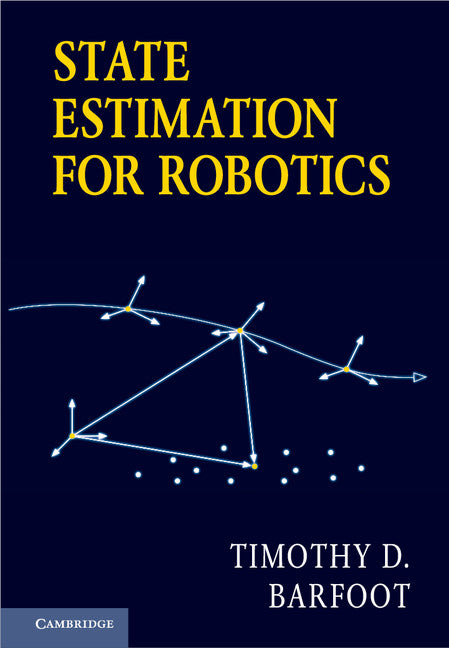Freshly Printed - allow 8 days lead
Couldn't load pickup availability
State Estimation for Robotics
A modern look at state estimation, targeted at students and practitioners of robotics, with emphasis on three-dimensional applications.
Timothy D. Barfoot (Author)
9781107159396, Cambridge University Press
Hardback, published 31 July 2017
380 pages
26.1 x 18.3 x 2.3 cm, 0.85 kg
'This book provides a timely, concise, and well-scoped introduction to state estimation for robotics. It complements existing textbooks by giving a balanced presentation of estimation theoretic and geometric tools and discusses how these tools can be used to solve common estimation problems arising in robotics. It also strikes an excellent balance between theory and motivating examples.' Luca Carlone, IEEE Control Systems Magazine
A key aspect of robotics today is estimating the state, such as position and orientation, of a robot as it moves through the world. Most robots and autonomous vehicles depend on noisy data from sensors such as cameras or laser rangefinders to navigate in a three-dimensional world. This book presents common sensor models and practical advice on how to carry out state estimation for rotations and other state variables. It covers both classical state estimation methods such as the Kalman filter, as well as important modern topics such as batch estimation, the Bayes filter, sigmapoint and particle filters, robust estimation for outlier rejection, and continuous-time trajectory estimation and its connection to Gaussian-process regression. The methods are demonstrated in the context of important applications such as point-cloud alignment, pose-graph relaxation, bundle adjustment, and simultaneous localization and mapping. Students and practitioners of robotics alike will find this a valuable resource.
1. Introduction
Part I. Estimation Machinery: 2. Primer on probability theory
3. Linear-Gaussian estimation
4. Nonlinear non-Gaussian estimation
5. Biases, correspondences, and outliers
Part II. Three-Dimensional Machinery: 6. Primer on three-dimensional geometry
7. Matrix lie groups
Part III. Applications: 8. Pose estimation problems
9. Pose-and-point estimation problems
10. Continuous-time estimation.
Subject Areas: Image processing [UYT], Computer vision [UYQV], Graphics programming [UML], Robotics [TJFM1]


